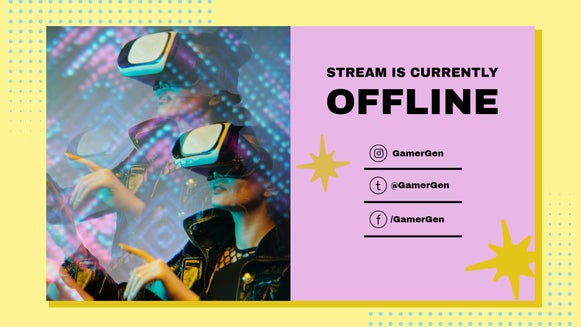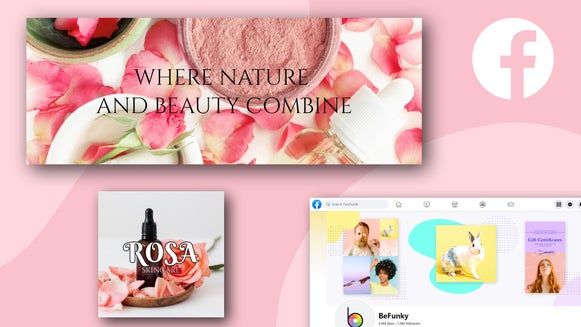A Simplified Guide for Building Marketing Campaign Assets
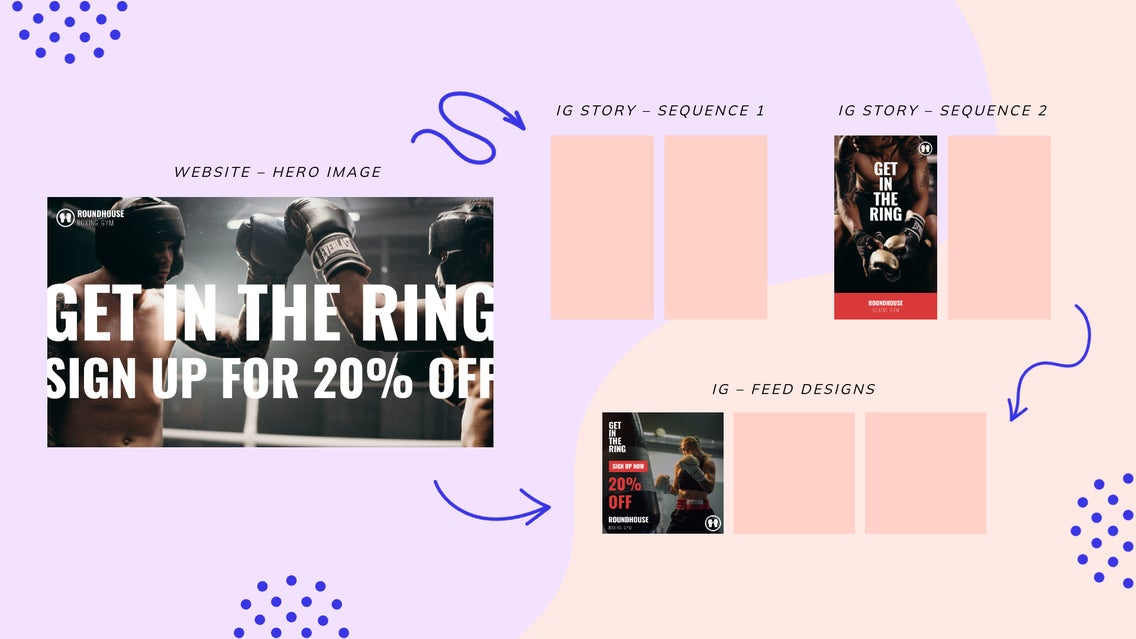
After all of your brand building, you’re ready to start marketing your business, but where do you begin? Most people simply create a single ad that they boost on Facebook or Instagram, but this usually won’t get you the kind of results you need. A more successful strategy is to create a marketing campaign.
A marketing campaign promotes a specific service, product, or brand in general. In order to build a marketing campaign, you need marketing assets. These include videos, photos, graphics, social media posts, ads, and website content, among other things.
We are going to create a simplified marketing campaign for a new boxing gym that you can use as a template when building your next campaign. When you are ready to start creating, BeFunky’s Photo Editor and Graphic Designer can help to build all of the assets you will need.
Planning Out Your Marketing Campaign Assets
We already have an article about how to build a marketing campaign and the process to go through when building it. In this article, we are going to specifically talk about what assets you should create for your campaign and how to launch them using an omnichannel strategy.
Build an Omnichannel Strategy
An omnichannel strategy simply means using multiple platforms for promoting your assets. Omnichannel strategies help you to create a more seamless experience for your customers. When building this strategy, what you first need to develop is a goal for the campaign – in this case, we want new members to sign up for a gym membership on our website. If this is our ultimate goal, we will need to work backward to figure out what other platforms we will want to market on in order to funnel people to our website.
The easiest way to imagine this is by thinking of an airport layout. Your ultimate goal is to get on your plane but in order to get there, you first have to walk through the front doors, get your ticket, check your bag, go through security, and maybe get a snack before heading to your gate. There is signage along the way to help you move from one area to the next. The assets we need to build will act as your digital signage and should catch and then funnel the correct target to the ultimate goal you set.
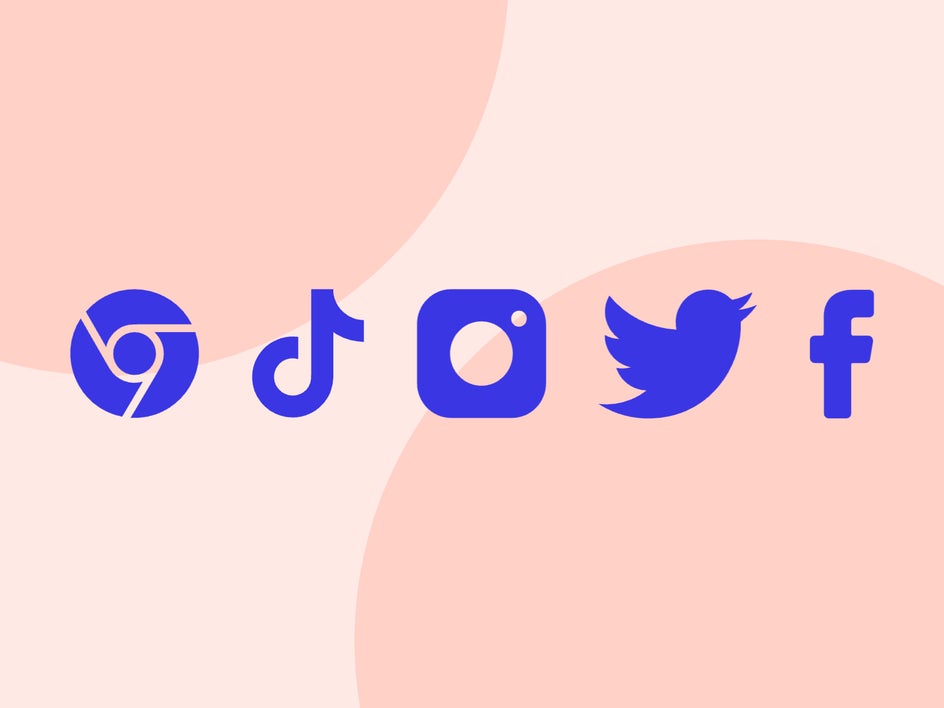
According to our article about how to Create a Marketing Campaign That Boosts Sales, once you choose a product or service that you want to market, you then need to decide what platform to promote it on. With an omnichannel strategy, we are going to use our most popular platform to catch the most interest and then funnel the audience to one or more other platforms to achieve our final goal.
At this point of the stage, decide on two or more platforms you want to use for promotion. These can include your website, blog, social media accounts, or newsletter to name a few. You will want to use your most popular platform for the initial catch and then funnel these people to the destination of your choosing. We are going to use Instagram as our most popular platform since we get the most traffic there and then use our website for our final destination.
Since we will be using our website and Instagram account for promotion, we will need to create assets for each of these. When you’re ready to start designing, BeFunky’s Graphic Designer has got you covered.
Break Down the Assets Needed for Each Platform
I like to break this down visually so that I can see everything I need for this campaign and fill it in as I go. If my main goal is to get sign-ups via the website, I will need a landing page or hero image front and center on my website so that when they click on an external link, it will take them directly to the page they are expecting. It is best not to make your audience wander around for the information they need – if it takes them more than 7 seconds to find the information they are looking for, they will click out of your website. You want to make this path clear for them so it is easy to follow.
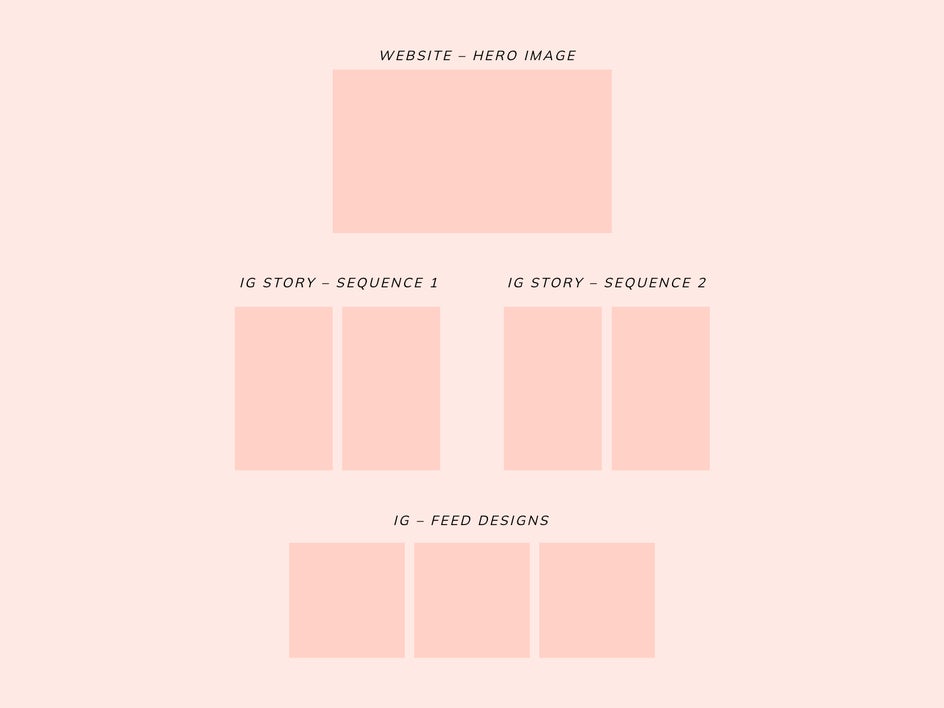
Now, working backward, in order to get them to the website, we will first want to hook people through Instagram Stories. We can post multiple stories over the course of our two-week campaign without annoying our audience. In order for them to be able to gather more information from our page after they see a story, we want to have a couple of Instagram Posts connecting them to the link in the bio to get them to the website.
As you can see, creating a marketing campaign is much different than simply creating a single marketing ad. This omnichannel approach helps you to create a seamless experience for your customers, leading them to the ultimate destination of your choosing.
Building Successful Marketing Campaign Assets
Once you have developed your omnichannel strategy and chosen the platforms you will be marketing on, it's time to build your campaign assets.
Because we are using our website and Instagram as our promotional platforms, we are going to need a hero image for the website, three posts for our Instagram Feed that we will cycle through twice, and two Instagram story series’ with two slides each. If you have a blog or large email subscriber list, these platforms would be your main focus for promotion and you would need to create an email newsletter header and blog thumbnails.
Follow a Visual Strategy When Building Assets
Much like developing a strategy before you build your assets, building assets should also follow a visual strategy. A visual strategy should follow your brand guidelines. This will assure that your marketing material fits in alignment with your overall brand. You are able to pick and choose pieces of your branding to emphasize in a campaign, but it should ultimately look like your brand at a glance.
You should also create assets that look similar but are not the exact same. Cohesive variation really helps keep the interest alive throughout a campaign. If you show the same image over and over again, people will get bored of it and will stop interacting with it. Variation is key.
Design for a Target Demographic
When creating Click-Worthy Ads, remember that it is important to design for your preferred audience, including their communication style. Know your audience and what kinds of visuals they like to engage with. The audience we are wanting to engage with here are males and females between the ages of 25 and 45. This will fundamentally change our design if we compare it to designing something for a demographic of teens.
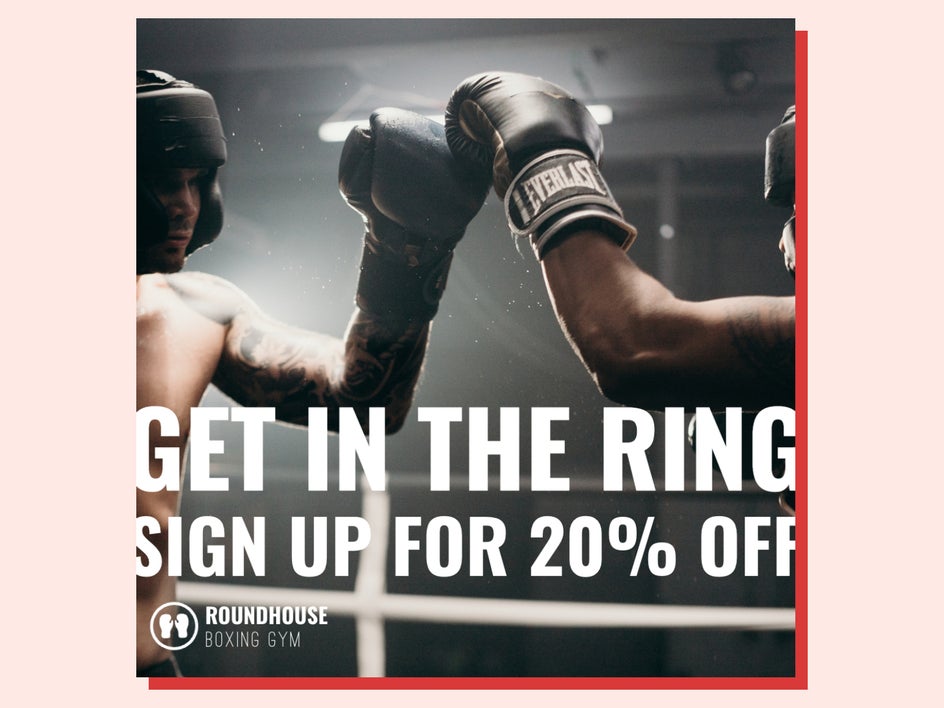
Make Multiple Marketing Campaign Asset Variations
When creating my first asset, I like to start with my main promotional medium. If my main medium is a poster for an event, I start with an 11x17 inch canvas. If I am promoting on social media, then I usually start with a 1080x1080 pixel square. I am going to start with a square for this one since our most popular platform is Instagram.
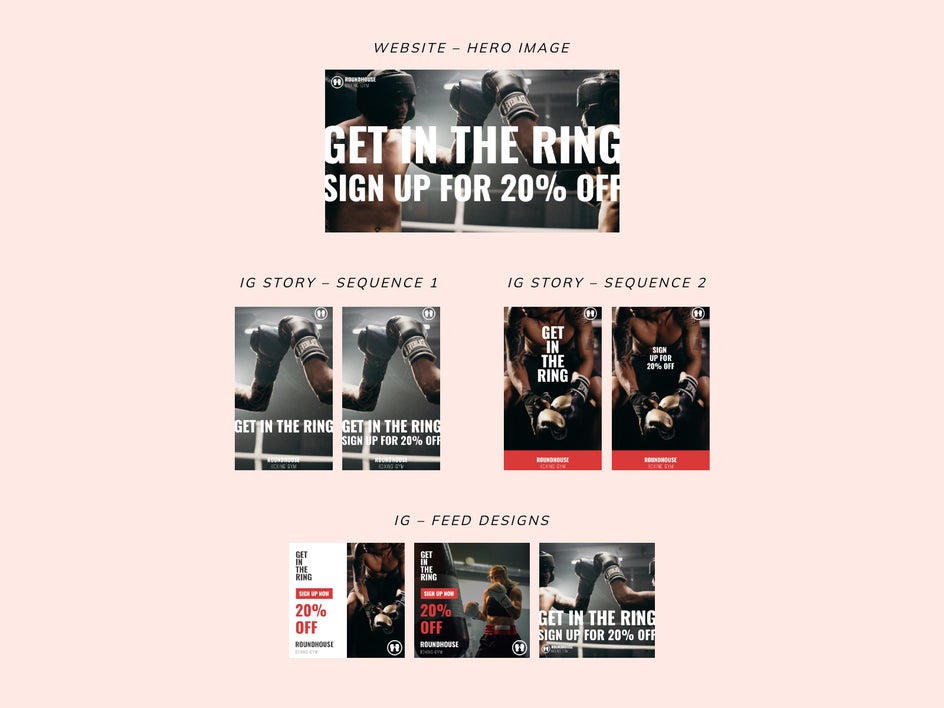
After we create our initial design, we will adjust it for our other platforms and mediums using the Smart Resize tool in BeFunky’s Graphic Designer. Take the 1080x1080 square you just made and in the Customize tab, select Resize Template. Select from any of the options in the dropdown menu or enter your measurements in the Width and Height sections. Make sure to select Smart Resize since this will help to resize your artwork to fit the new canvas. After this, I like to swap out the photos and rearrange the text to add some variation to the design.
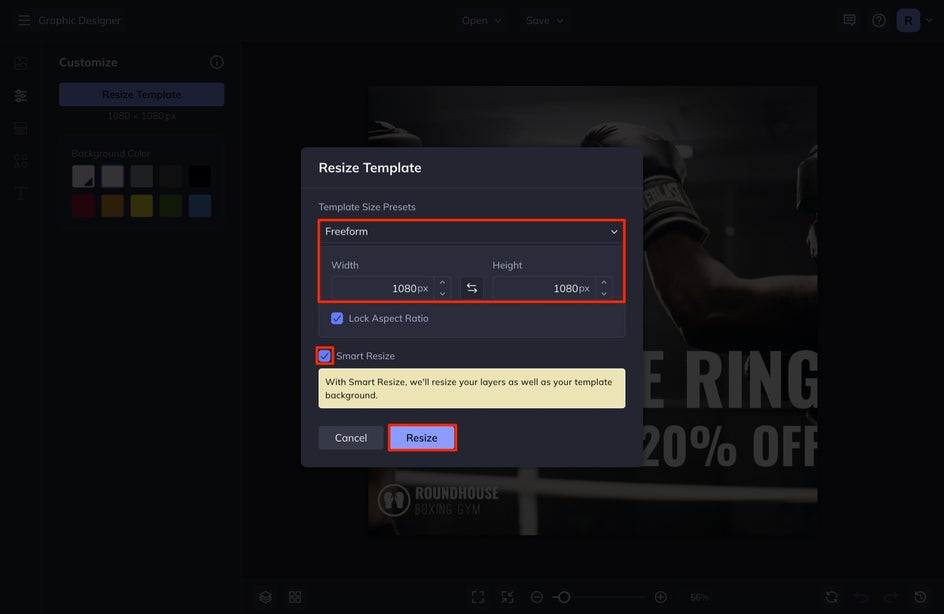
The goal is to create assets that look similar but aren’t exactly the same. You can do a mix of photos, graphic elements, or text. I take each of these finished designs and then resize them to create different variations. If you want more help with this, don’t forget to check out our article about How to Resize Social Media Templates for Cohesive Posts.
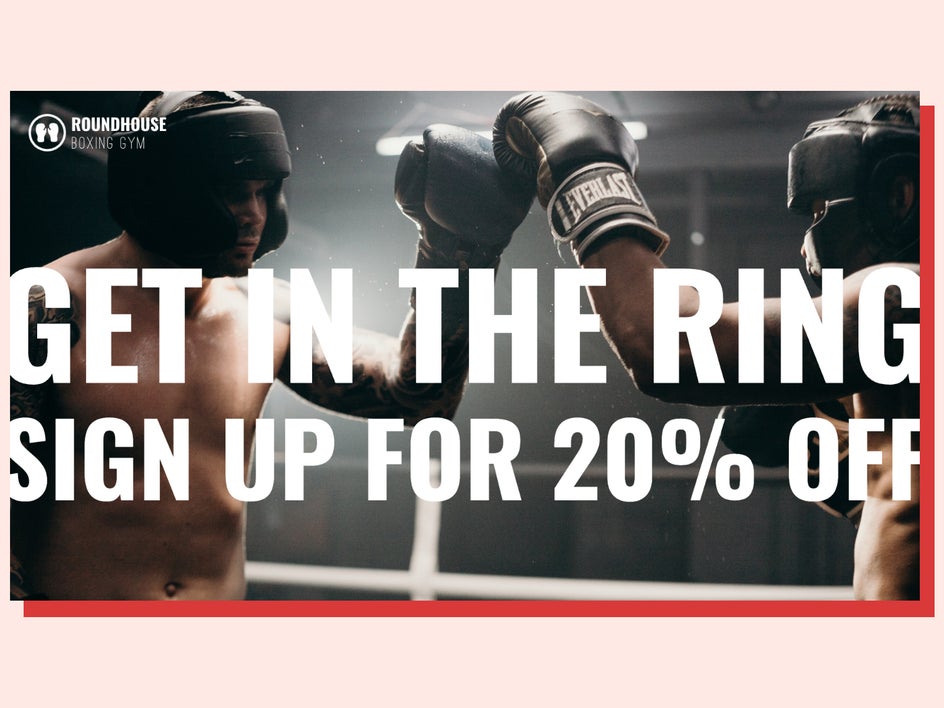
Create Marketing Campaign Assets With BeFunky
When you are finished designing in BeFunky’s Graphic Designer and are ready to launch your campaign, take a look at our next article for how to Create a Marketing Campaign That Boosts Sales. You will want to choose a start date, create a launch schedule, and post your first round of marketing material.










